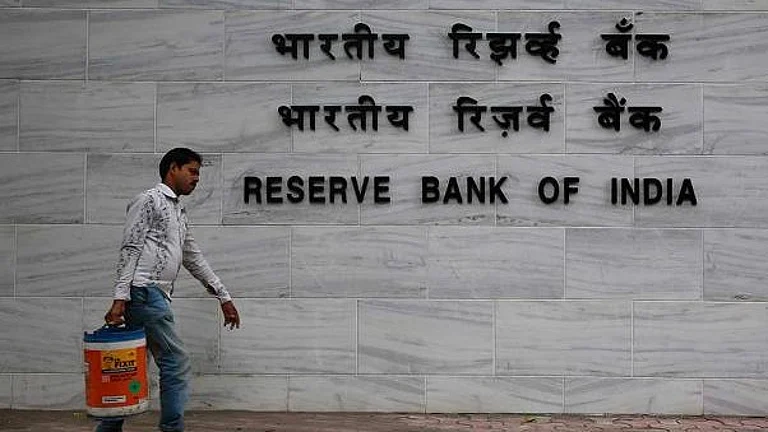The Reserve Bank of India's (RBI) Monetary Policy Committee (MPC) began its three-day meeting today, with inflation under the central bank's satisfactory level. Yet, global headwinds continue to cast a shadow on India’s economic outlook. The MPC is scheduled to announce its policy decision on April 9, and market watchers are widely anticipating a rate cut. But what’s fuelling these expectations?
"With inflation steadily moderating and economic growth struggling to gain momentum, the central bank faces little choice but to extend its easing cycle," says Sankar Chakraborti, managing director and CEO of Acuité Ratings and Research.
Moderating Inflation
In February, the RBI cut the benchmark repo rate by 25 basis points—from 6.5% to 6.25%—marking the start of a potential rate cut cycle after a long pause. The RBI had held rates steady for nearly five years, citing persistently high retail inflation.
But things are different now. In February, India's retail inflation dipped to a seven-month low of 3.6%, mainly driven by easing food prices. The government has given the RBI the target to maintain inflation in the 2-6% band, with a 4% median band. Hence, there’s now more elbow room for policy easing.
"The hope is that if we don’t see a summer-related spike in vegetable prices like we did last year, inflation could remain anchored around that 4% level. That should give the RBI enough room to go for at least two more rate cuts without much concern," says Indranil Pan, chief economist at Yes Bank.
Growth Concerns Mount
At the same time, growth projections have been revised downward. The RBI expects the country's GDP growth to come in at 6.6% for FY25—lower than its earlier 7.2% estimate. During its February meeting, the central bank pegged growth at 6.7% in the current financial year.
On top of that, external pressures are not helping either. Experts suggest that the recent announcement of reciprocal tariffs by US President Donald Trump's could dent India's growth estimate further.
"The US imposed a 26% tariff on Indian imports. This is expected to reduce India’s GDP growth for FY26 by 20–40 basis points, potentially lowering it to around 6.1% from the RBI’s earlier forecast of 6.7%. This may push the RBI toward further rate cuts to counter economic strain," said Bajaj Broking in a report.
Liquidity Concerns
Liquidity in the banking system also remains a concern. The central bank had infused Rs 6.8 lakh crore in the banking system through Open Market Operations (OMO), Variable Rate Repo (VRR) auctions, and forex swaps. This has improved the banking liquidity deficit, which widened earlier in the quarter due to the central bank’s forex market interventions, bringing it down to Rs 1.6 lakh crore in March from Rs 2 lakh crore in January.
"Despite these interventions, liquidity remains tight, particularly for non-bank financial companies (NBFCs) and small businesses that rely on bank credit. Another rate cut could ease funding constraints, providing a much-needed boost to economic momentum," Chakraborti adds.
New Voice in the Room
The renewed optimism for a rate cut also comes from the appointment of the central bank's deputy governor, Poonam Gupta, just ahead of the MPC meet. A former World Bank economist, Gupta has previously supported monetary easing.
In a February 8 column published in The Economic Times, Gupta wrote that the rate cut in the February MPC meeting was justified, whether one looks at India's record over the past few years or in comparison to the rest of the world.
She also mentioned that the top bank raising the policy rate to 6.5% in 2023, did not seem high when the growth rate for the year was 7% and inflation had peaked at 6.7%. "The rate seemed unjustifiably high when growth was projected to decelerate to 6.4% and inflation was expected to moderate to 4.8% during the current year," she wrote.
Hence, experts believe that her being in the six-member MPC will help the case of rate cuts on April 9.
Decimal Drift: How Much Is Enough?
Experts consensus points to a 25-basis-point rate cut on April 9, which would bring the repo rate down to 6%.
"If there was any hesitation, they shouldn’t have started cutting in the first place. So, an April cut is very likely," Pan notes. He cautions that only a sharp depreciation of the rupee or a significant price shock could halt the decision.
Pan also suggests another rate cut in also expected 25bps cut in June which would bring the benchmark repo rate to 5.75%. Chakraborti agrees that a further cut in FY26 is a strong possibility, but for now, he says, “We continue to expect the April MPC cut to be the last of this cycle.”

































